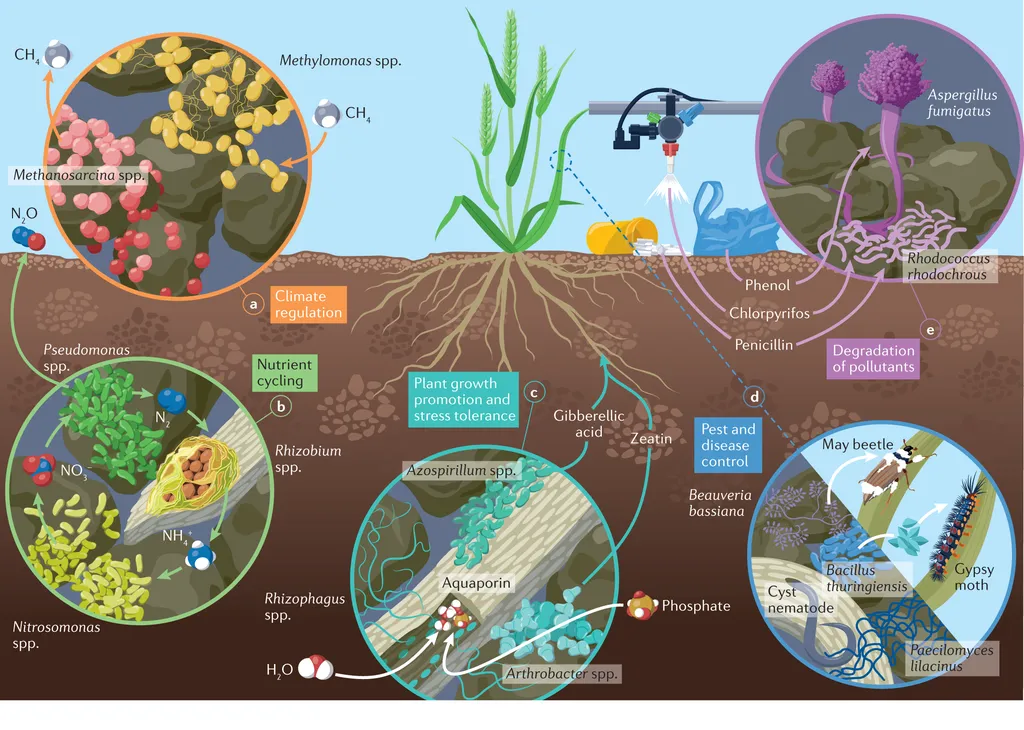In the heart of China’s Gansu Province, a groundbreaking study led by YANG Yang at the Institute of Forest, Fruits and Floriculture, Gansu Academy of Agricultural Sciences, is unraveling the intricate dance between soil microorganisms and physicochemical properties in orchard ecosystems. This research, published in ‘Guoshu xuebao’ (Journal of Fruit Sciences), is not just about dirt and bugs; it’s about revolutionizing how we understand and manage soil health, with profound implications for agriculture, ecological restoration, and even the energy sector.
Imagine soil as a bustling city, teeming with life. In this metropolis, microorganisms are the workers, breaking down organic matter, cycling nutrients, and shaping the very structure of the city. They’re not just passive residents; they’re active architects, constantly modifying their environment. “Soil microbial communities don’t just respond to changes in soil physicochemical characteristics,” explains YANG, “they actively modify the soil environment through their metabolic functions.”
This dynamic interplay is a two-way street. Just as microbes influence soil properties, so too do soil conditions shape microbial communities. It’s a complex, co-evolutionary relationship that underpins the stability and productivity of terrestrial ecosystems. Understanding this relationship is crucial, especially in orchard ecosystems where precise management practices are needed to ensure high-quality fruit production.
The implications of this research extend far beyond the orchard. In the energy sector, for instance, understanding soil microbial processes can aid in the development of bioenergy crops, improve soil carbon sequestration, and mitigate greenhouse gas emissions. “Soil microorganisms are key agents in ecological restoration and the recovery of soil productivity,” says YANG. By harnessing the power of these microscopic workers, we can enhance ecosystem resilience and productivity, contributing to global sustainable development goals.
The study highlights the importance of advanced molecular techniques, such as metagenomics and metatranscriptomics, in exploring the factors regulating microbial functions. These high-resolution methodologies allow for the systematic elucidation of microbial functions, facilitating the identification of key taxa and mapping functional genes. Moreover, integrating multi-omics with ecological modeling and machine learning provides novel opportunities for predicting and evaluating microbial responses to environmental changes.
Looking ahead, this research could pave the way for the development of microbiome-based soil management technologies. By guiding the directional regulation of microbial activity, we can restore ecological balance, improve soil fertility, and enhance the health of the fruit tree rhizosphere. The establishment of intelligent soil health management systems, incorporating microbial function monitoring, big data analytics, and ecological simulation modeling, will further improve the precision and effectiveness of soil health management in orchard systems.
In the words of YANG, “Future research should focus on regulating microbial community structure, exploring functional redundancy, and deciphering microbial metabolic regulatory mechanisms.” By doing so, we can address pressing agricultural and environmental challenges, contributing to sustainable agricultural development, ecological conservation, and global food security.
As we stand on the precipice of a new era in soil science, one thing is clear: the tiniest inhabitants of our soils hold the key to some of our biggest challenges. And with researchers like YANG Yang leading the way, we’re one step closer to unlocking their potential.

